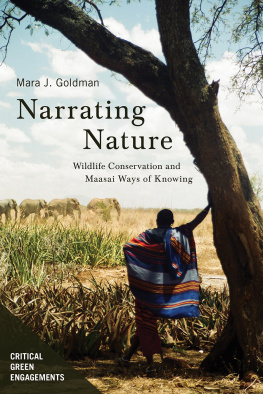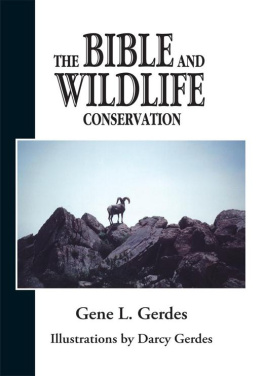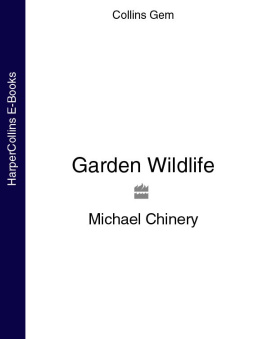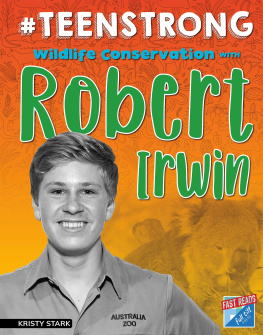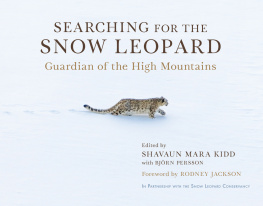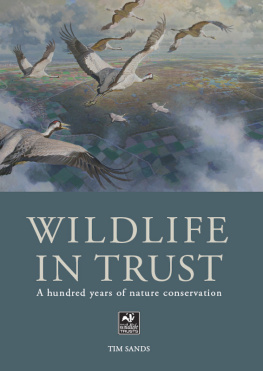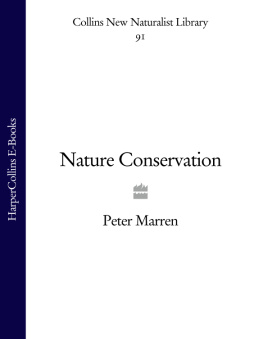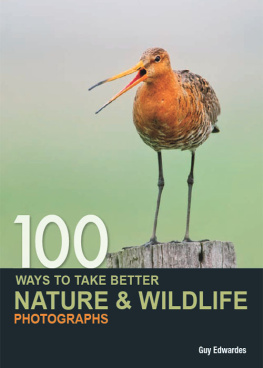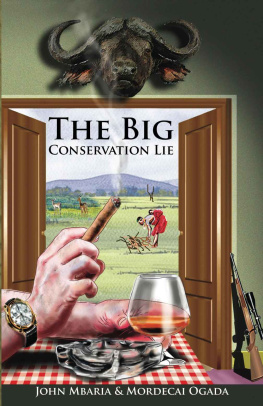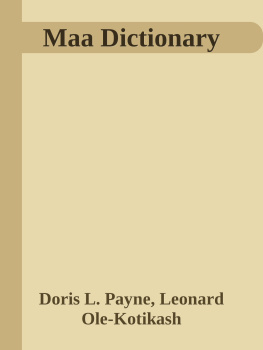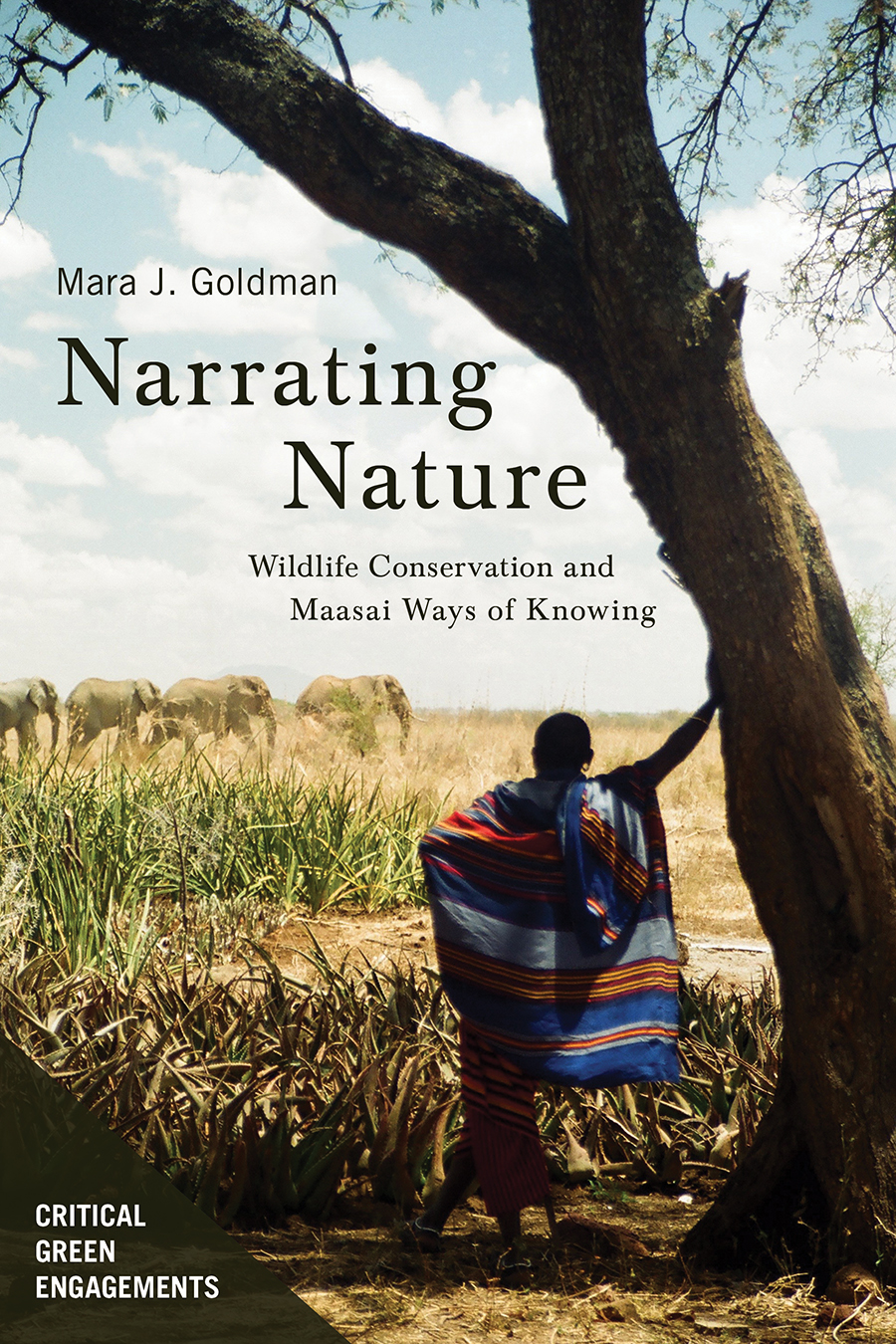
Narrating Nature
Critical Green Engagements
Investigating the Green Economy and Its Alternatives
Jim Igoe, Molly Doane, Jos Martnez-Reyes, Tracey Heatherington, and Melissa Checker
Series Editors
Narrating Nature
Wildlife Conservation and Maasai Ways of Knowing
Mara J. Goldman

The University of Arizona Press
www.uapress.arizona.edu
2020 by The Arizona Board of Regents
All rights reserved. Published 2020
ISBN-13: 978-0-8165-3967-3 (hardcover)
Cover design by Leigh McDonald
Cover photo by Mara J. Goldman
Interior design by Sara Thaxton
Typeset in 10/14 Arno Pro (text), Baskerville, and Trade Gothic (display)
Library of Congress Cataloging-in-Publication Data
Names: Goldman, Mara, author. | University of Arizona Press.
Title: Narrating nature : wildlife conservation and Maasai ways of knowing / Mara J. Goldman.
Other titles: Critical green engagements.
Description: Tucson : University of Arizona Press, 2020. | Series: Critical green engagements: Investigating the green economy and its alternatives | Includes bibliographical references and index.
Identifiers: LCCN 2020011734 | ISBN 9780816539673 (Hardcover)
Subjects: LCSH: Human ecologyAfrica. | Traditional ecological knowledge. | Wildlife conservationAfrica.
Classification: LCC GF55 .G65 2020 | DDC 333.720967dc23
LC record available at https://lccn.loc.gov/2020011734
Printed in the United States of America
This paper meets the requirements of ANSI/NISO Z39.48-1992 (Permanence of Paper).
To Anisha, Aanya, and Shankar,
To Mom and Harvey,
And to my Maasai friends and family throughout Tanzania and Kenya
Contents
Illustrations
Figures
Maps
Tables
Preface
T his book is the culmination of a voyage that began over two decades ago when I first traveled to Tanzania in 1993 as an undergraduate on a study abroad program about wildlife ecology and conservation. As a geographer at Clark University, I had already been exposed to the highly political social history of nature conservation, including the injustices often involved in the creation of national parks, such as the eviction of Maasai and others from Serengeti. This was not something that was covered on the study abroad program, which was focused on wildlife ecology and conservation, and did not cover the social side of such issues. I planned to conduct my required independent study in Ngorongoro Conservation Area (NCA), to learn about a place that was managed for multiple land usewildlife conservation, tourism development, andpastoralism. I had read Homewood and Rodgerss important book, Maasailand Ecology, which provided a detailed social and ecological exploration of land use in the area. The book had been written in part to provide data for a new management plan funded by United Nations Educational, Scientific and Cultural Organization (UNESCO). The underlying assumption at the time was that the report would provide the necessary evidence to evict Maasai from the conservation area. The book did no such thing. On the contrary, the authors argued that restrictions placed on Maasai throughout NCAparticularly on grazing and controlled burning, were not only leading to increased poverty among Maasai but also to many of the ecological changes occurring in the area, such as the spread of invasive species. In other words, Maasai were not ruininga naturalarea, but restrictions on their use and management techniques in the name of conservation and tourism were ruining both their livelihoods and the entire ecosystem, or what was being set aside as nature in the first place (Homewood and Rodgers 1991).
NCA was not only set aside by the Tanzanian state for conservation and tourism, but was also declared both a World Heritage Site and a Man and Biosphere Reserve by UNESCO.
Next page
